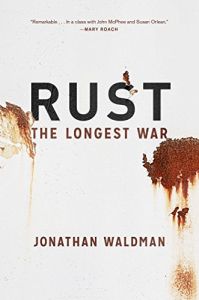Join getAbstract to access the summary!

Join getAbstract to access the summary!
Jonathan Waldman
Rust
The Longest War
Simon & Schuster, 2015
What's inside?
If you listen carefully, you can hear pretty much everything rusting away.
Recommendation
In daily life, rust is terrible and pervasive. Science writer Jonathan Waldman explains that rust is omnipresent, destructive and expensive. Humans have been fighting rust for centuries. Even if they win, sometimes the victories aren’t worth the cost. Waldman’s book is an intimate, personal, poetic and inventive account of what rust is, what it costs, how people fight it, and how other people find it beautiful. Its weakness is the flip side of its strengths: Waldman is so enthusiastic that he adds in so much detail that some readers may flag. The most ardent rustophile may lose the thread of rust in his extended, yet always meaty and worthwhile, biographical sketches. Still, getAbstract recommends Waldman’s highly entertaining, smart saga to anyone interested in industrial civilization, accident prevention, science writing or new perspectives.
Summary
About the Author
Jonathan Waldman has written for The Washington Post, McSweeney’s and Outside. He was a Ted Scripps Fellow in environmental journalism at the University of Colorado.


















Comment on this summary